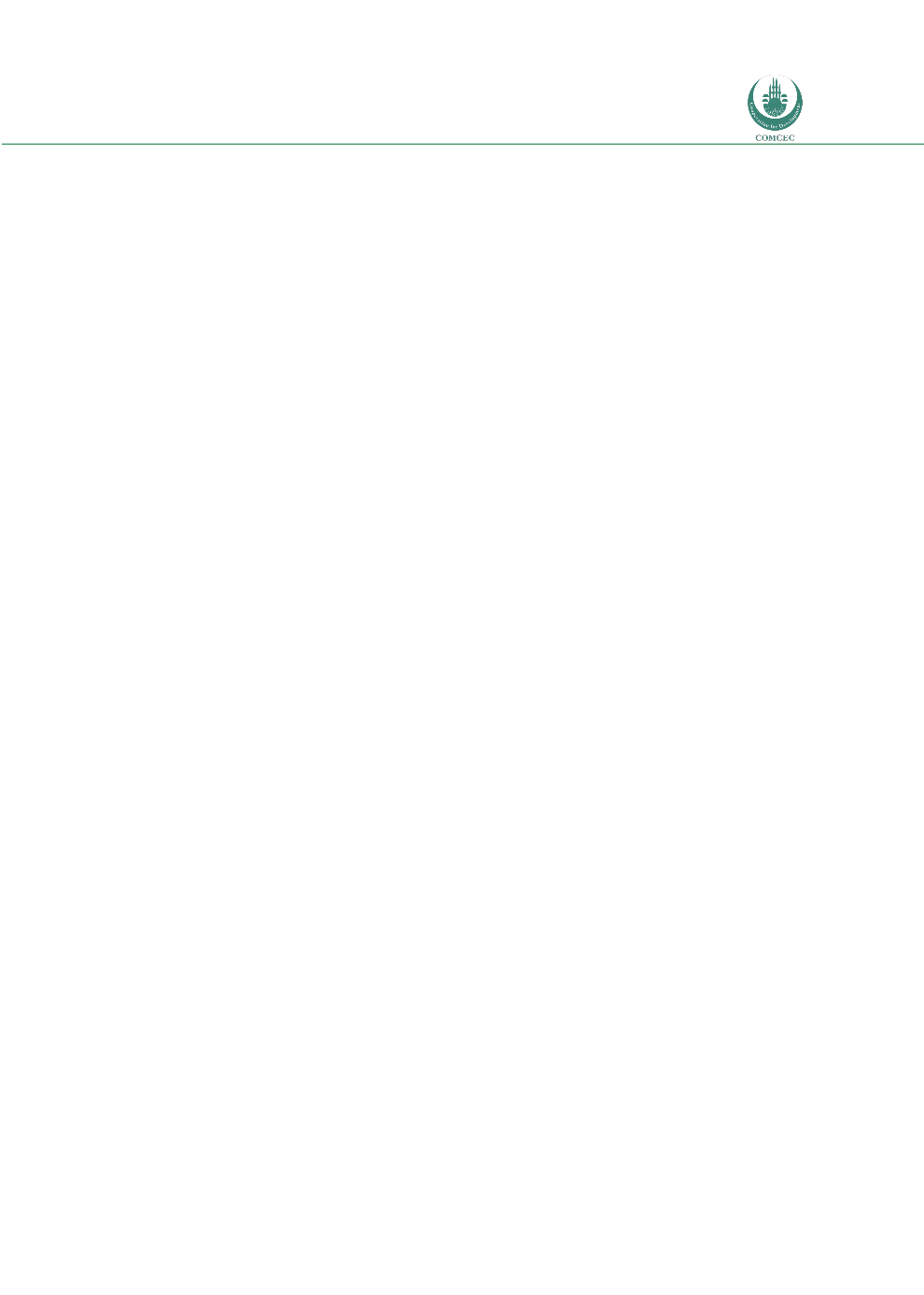

Risk Management in
Islamic Financial Instruments
55
Strengthening the financial safety net mechanism – namely, LOLR facilities and
emergency financing mechanisms – as well as deposit insurance, all of which need to
be compatible with
Sharī`ah
principles.
3.5.2 Some Recent Developments in Liquidity Management in Islamic Finance
Effective liquidity risk management requires a functioning system of business laws. Countries
with IIFS or those with ambitions to have IIFS put great emphasis creating a supportive legal
structure for IIFS. Liquidity infrastructure also requires a viable securities and exchange
market. Developments in security and exchange markets include the creation of an electronic
Islamic interbank platform for short-term liquidity management through a proprietary scoring
system in the UAE and an electronic multi-currency and multi-commodity trading platform in
Malaysia. An Islamic money market and a multitude of Shariah compliant instruments and
trading mechanisms are also necessary for liquidity infrastructure.
Malaysia’s Islamic Interbank Money Market, which was established in 1994, is an example of a
well-functioning intermediary that provides Shariah compliant programs such as Murdarabah
Interbank Investment and the Commodity Murabahah Programme. An example of diversifying
instruments can be seen in Bahrain, Indonesia, Malaysia and Sudan’s efforts to use sukuk
issuance programs to integrate Islamic finance into their public expenditure programs (IFSB
79-84).
3.5.3 Prudential Regulation
Financial regulation is necessary to protect markets, institutions and consumers. Countries
with both conventional and Islamic finance systems use one of three frameworks to regulate
Islamic finance. Some countries, such as Bahrain and the UAE, maintain two separate
regulatory systems. Others, such as Lebanon, create special laws for the IIFS and conventional
finance systems. In the third type of framework, the IIFS follows the same regulations as
conventional finance institutions. Saudi Arabia and Egypt function in this manner (Grais 5).
The IFSB has published several reports to provide guidance to IIFS on liquidity management,
such as the FSI Development, Ten-Year Framework and Strategies (in May 2007), IFSB
Technical Note on Issues in Strengthening the Liquidity Management of IIFS (in March 2008),
and the Report on Islamic Finance and Global Financial Stability (in April 2010) (IFSB 103). In
2012, the IFSB released its Guiding Principles on Liquidity Risk Management for IIFS. The
report laid out 23 principles for IIFS and RSAs. For IIFS, the principles covered governance,
identifying managing and reporting liquidity risks, and foreign exchange liquidity risks (IFSB
86). The IIFS will have to adopt the Basel III liquidity standards, but the Islamic financial
industry will face challenges in meeting the standards, due to its underdevelopment. For
example, the volume of Shariah compliant instruments and sukuk are not high enough to meet
the requirements of Level 1 and 2 assets as delineated by the standards. The capital
requirement is expected to increase by 25-40%. The Basel Committee has recognized
discrepancies between Islamic and conventional banks and has allowed for exceptions in
meeting standards (IFSB 89-90). Even with some leniency, Islamic banks will have to be

















